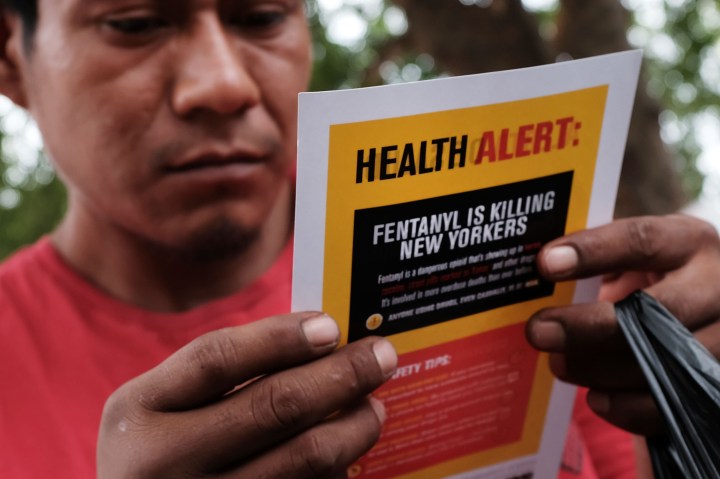
What tiny Estonia can teach the U.S. about opioids

Opioid painkiller addiction has increased over the past decade. It’s also claimed more lives. The Organisation for Economic Co-operation and Development says the epidemic claimed 20% more lives among the club of rich nations between 2011 and 2016.
The crisis in America is well known. On average, 130 Americans die from an opioid overdose every day. In 2017, President Trump declared it a public health emergency.
With a population of just 1.3 million people, Estonia has one of the highest opiod-related death rates. But it’s also falling. A 10% reduction over five years may be small, but Estonia is swimming against a tide in a way that other countries have not managed to.
Katri Abel-Ollo at the Estonian Drug Monitoring Center says a heroin shortage 16 years ago started the epidemic. The following conversation has been lightly edited for clarity.
Katri Abel-Ollo: Our drug users started to find other possibilities to use opioids, and they found fentanyl. Illicit fentanyl.
Victoria Craig: When did people feel this was a problem they needed to start addressing?
Katri Abel-Ollo: Actually, we realized that from the beginning, when the fentanyl appeared. Immediately, the drug-related overdoses increased a lot, and our ambulances had very busy nights and days. In 2014, the ministry of internal affairs decided that this was really a crisis and then they started to build up an approach where the big priority was to decrease the drug-related deaths in Estonia. Fentanyl disappeared from the Estonian drug market because our police did excellent work, and they dismantled many criminal networks.
Victoria Craig: But have there been any unintended consequences?
Katri Abel-Ollo: Yes. Because there was a lack of fentanyl, [people] tried to find other solutions. Unfortunately. they found them from other illicit medications, from Russia. The effect, if they mix them, is very bad and we can see that mental health has become worse in our patients.
Victoria Craig: And so all of the steps that the government and the country has taken to address the opioid epidemic, have they been successful?
Katri Abel-Ollo: In Estonia, we say it’s like a dragon with many heads. If you try to cut one head off, then many other heads will come. When we’re talking about naloxone distribution, then we have been successful, and our opioid users have this antidote with them. But when you talk about the drug market, then really it’s very, very difficult to fight against the drug market. And the new substances appear, and we have to finance and put a lot of effort into universal prevention, also.
There’s a lot happening in the world. Through it all, Marketplace is here for you.
You rely on Marketplace to break down the world’s events and tell you how it affects you in a fact-based, approachable way. We rely on your financial support to keep making that possible.
Your donation today powers the independent journalism that you rely on. For just $5/month, you can help sustain Marketplace so we can keep reporting on the things that matter to you.


















